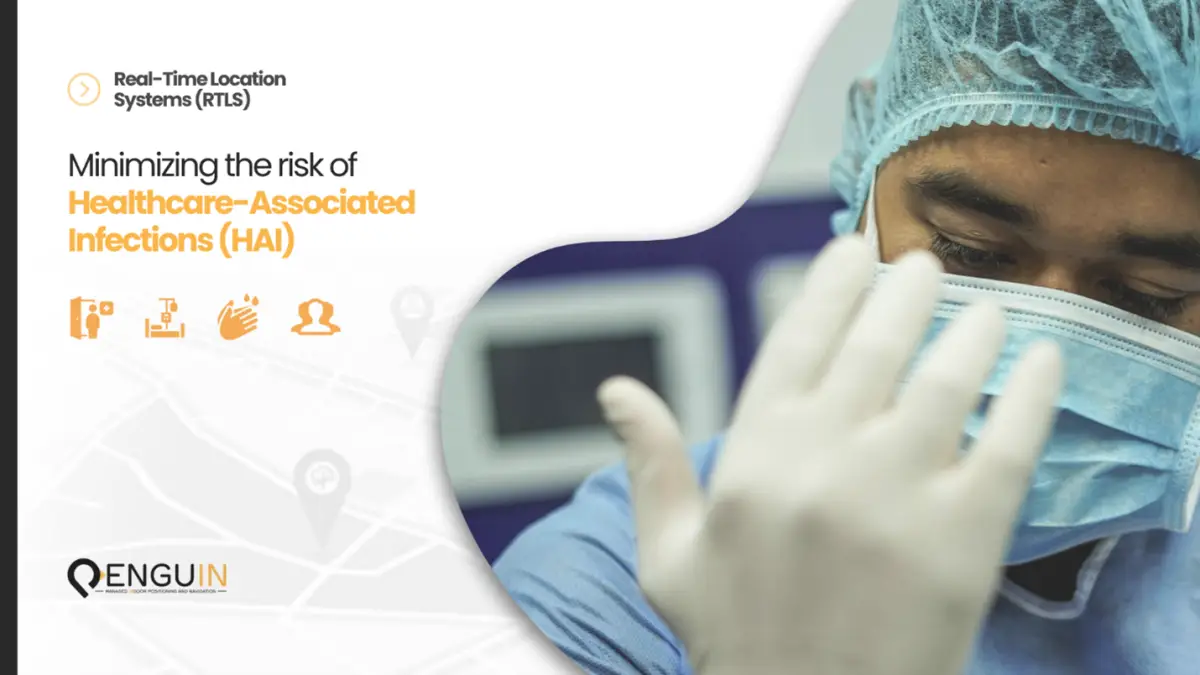Healthcare facilities constantly strive to enhance patient safety and minimize the risk of healthcare-associated infections (HAIs). Real-Time Location Systems (RTLS) have emerged as a valuable technology in this quest, offering innovative solutions to monitor and manage various aspects of hospital operations.
The Burden of Healthcare-Associated Infections
HAIs pose a serious threat to patient well-being, adding to the complexity and cost of healthcare delivery. According to the Centers for Disease Control and Prevention (CDC), approximately one in 31 hospitalized patients in the United States acquires at least one HAI [1]. These infections not only compromise patient recovery but also strain healthcare resources.
Read more about the CDC guidelines
How do RTLS Solutions Operate? And which technology is the most suitable?
Real-Time Location Systems (RTLS) employ various technologies to implement location-based solutions. Each technology has its merits and drawbacks primarily based on the accuracy at cost tradeoff (initial investment and operational). Example RTLS technologies include Ultra-wideband (UWB), Ultra-sonic, Infra-Red and RFID.
In our pursuit of an optimal solution, PenguinIN has developed its own RTLS solution using Bluetooth Low Energy 5.1 (BLE 5.1) with healthcare in mind. Today, PenguinIN’s sub-meter positioning accuracy is the underlying enabler for HAI prevention solution offered by PenguinIN.
Learn more: BLE 5.1 vs UWB
RTLS applications for minimizing the risk of healthcare-associated infections (HAIs)
Asset Tracking:
RTLS systems assist in monitoring the movement and usage of medical equipment, ensuring that devices are properly cleaned and disinfected between uses. By maintaining a digital record of equipment locations and usage, healthcare facilities can implement stringent protocols for equipment hygiene, reducing the risk of cross-contamination.
People Tracking
Real-time location tracking of patients allows healthcare providers to monitor their movements throughout the facility. This is particularly crucial in quarantine scenarios where isolating patients with contagious diseases is necessary. RTLS systems enhance the ability to implement effective isolation measures, limiting the spread of infections within the hospital environment.
Staff Monitoring:
Healthcare professionals play a pivotal role in preventing the transmission of infections. RTLS systems enable the tracking of staff movements, ensuring that hygiene protocols are adhered to consistently. This includes monitoring hand hygiene compliance and optimizing workflows to minimize unnecessary exposure to infectious agents.
Workflow Optimization:
RTLS technology helps streamline hospital workflows by providing real-time insights into the movement of patients, staff, and equipment. By optimizing the flow of people and resources, healthcare facilities can reduce congestion, improve response times, and ultimately enhance infection control measures.
PenguinIN
By leveraging the capabilities of real-time location tracking, hospitals can implement proactive measures to reduce the risk of infections, improve patient safety, and enhance overall operational efficiency. This is where PenguinIN comes in. Our adopted technology (PenTrack) is mastered to ensure swift and affordable solutions. We provide the hardware, and grant accesses to our state-of-the-art algorithms that insure efficient and accurate results. Integrating seamlessly into physical and software environments to accommodate our solutions with near zero-overhead.
Get a free consultation today: [email protected]


